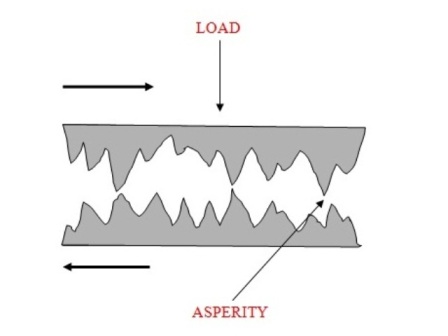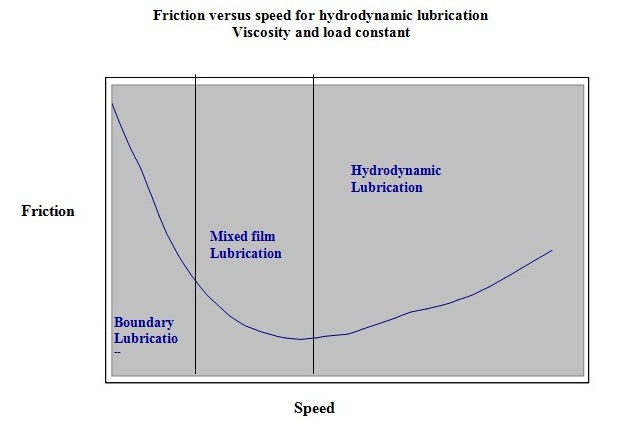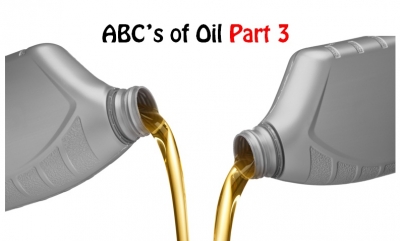So, we have dealt with the physical and chemical properties of oils and their performance specification but how does the stuff actually work?
Depending on which book, manual or learned journal you read, a lubricant can have as many as two dozen functions. These can be reduced to four very fundamental ones with anything subsequent, more or less, being a subdivision of one of these groups.
An oil must reduce friction, remove contaminants, cool and act as a structural material. An oil cools by absorbing heat and carrying it to the radiator. It keeps the engine clean by carrying contaminants to the filter for removal. It has viscosity and ‘”body” so it can act as a structural material (think of oil as forming a seal between the ring and the bore). But how does oil reduce friction? That is the prime function of a lubricant.
Friction is a ubiquitous part of our daily lives, we spend large amounts of energy just trying to overcome it whether that be walking, driving to work or opening a door. Although friction is often thought of as a negative mechanical characteristic it must be remembered that without it you would not be able to walk nor would the brakes on your car work.
Friction is usually seen as a mechanical problem and the force required to overcome it has long interested engineers. When man invented the wheel it enabled him to move weights around far more easily than dragging them from A to B. What he had done, in fact, was to replace sliding friction with rolling friction, which has a much lower value.
Surfaces that appear smooth and shiny to the naked eye will show peaks and furrows on closer inspection. This does not mean that the component has been poorly machined but components manufactured to high tolerances still have rough surfaces at a microscopic level.

A roller element magnified 200 times.
The rough bits that stick up from the surface are known as asperities. These peaks touch, and very high temperatures and pressures are achieved - this can cause momentary welding of the surfaces to take place. When the surfaces slide over each other, these welds are torn apart.
Whenever friction is overcome, the dislocation of surface material generates heat which can be highly destructive. Additionally, when there is solid friction, wear will take place. Material is lost due to the cutting action of opposing asperities and the shearing of microscopic welds. In extreme cases the combination of high frictional temperatures, welding and shearing can results in complete seizure.
The harmful effects of friction cannot be overemphasised. The job of a lubrication engineer is to control it; lubrication reduces friction by replacing solid friction with fluid friction.

Surfaces in relative motion
When one body slides over another, the force of resistance is known as sliding friction. If a ball were to roll over a metal surface, the relative velocity of the points of contact are actually zero and this results in rolling friction. However, there will always be some deformation of the contacting surfaces, so some sliding friction is always involved. Tests have shown that rolling friction is not influenced by the presence or absence of a lubricant, however, the deformation and the presence of sliding means that the oil is a very necessary component of a ball bearing.
The friction that exists between two bodies in relative motion can involve an appreciable energy loss that needs to be minimised. This is achieved by feeding a lubricant between those surfaces in order to replace solid friction with fluid friction.
Unfortunately, friction can never be eliminated as there will be internal viscous drag (fluid friction) of the oil.
In ideal situations the oil will cause the surfaces to separate completely; where this is not possible the oil can still keep friction to manageable proportions.
Three parameters need to be considered when looking at the various lubrication regimes: the speed at which the surfaces are moving relative to each other, the load placed on those surfaces; and the viscosity of the oil. Ideally, there should be high speed, low load and high viscosity; under these conditions the surfaces would always be separated. Unfortunately we do not live in an ideal world.
In the case of a plain bearing and journal there will always be a small amount of oil between the mating surfaces. However, at start up, the speed will be zero and the lubricant will not keep the surface completely apart – some of the asperities will touch. This is known as boundary lubrication; in this situation it is the additives in the oil that help to minimise friction.
As the speed of the journal increases pressure differentials cause oil to be sucked between the bearing and the journal, this is known as mixed film lubrication. At this point the surfaces are not quite separated but are supported by a full fluid film.
The speed becomes fast enough for the surfaces to become completely separated and the solid fiction is replaced entirely by fluid friction; this is known as hydrodynamic lubrication.
Unlike solid friction, fluid friction is dependent on speed and will gradually increase. Friction is actually at a minimum during the mixed film regime. The graph below illustrates this.

Finally, there is another regime that goes under the rather grand name of elastohydrodynamic lubrication. We have considered mating surfaces that have the same geometry, in a similar way that spoons stack together. But what about a roller bearing where the mating surfaces are not of the same shape?
Pure rolling friction should not require lubrication but the contacting surfaces deform elastically when placed under pressure or load. Oil is drawn into this contact but, because this takes place over a vanishingly small area, huge pressures are generated of the order of one and a half million kPa. At these pressures, the lubricant takes on the consistency of window putty (reversibly) and is capable of keeping the sliding friction to manageable proportions in this type of situation.
It is not easy to cram so much information into such a small space but it is hoped that this gives some background on which oils are available and how they work. Remember the five “rights” of oil: use the right product, in the right place, at the right time, in the right quantity and with the right attitude.
John Evans
Diagnostics Manager

